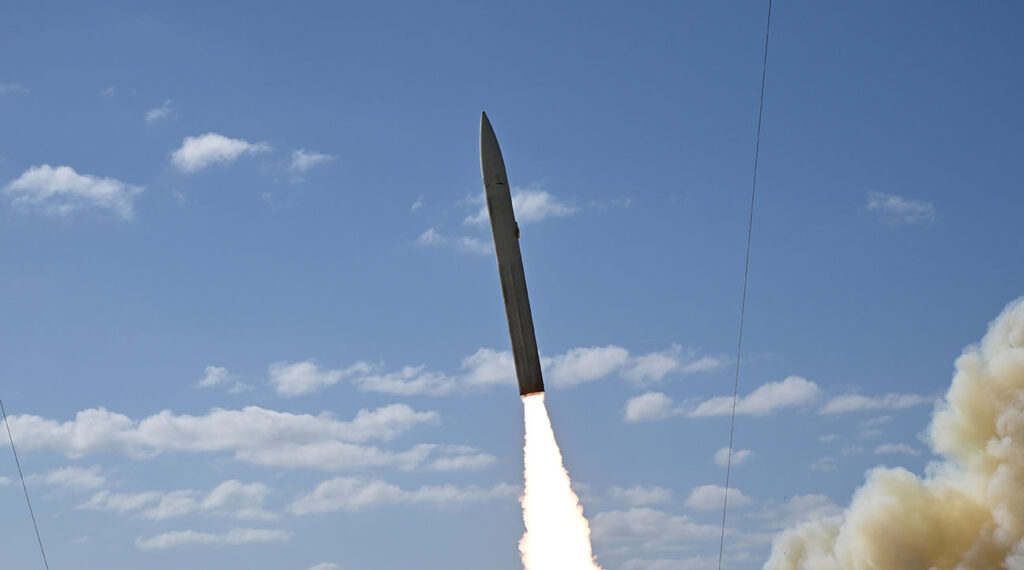The U.S. Navy Strategic Systems Programs completed a sea-based hypersonic missile test from Cape Canaveral Space Force Station, Florida, in May 2025. Above, a conventional hypersonic missile test is conducted in 2024 at Cape Canaveral. SECRETARY OF DEFENSE OFFICE OF PUBLIC AFFAIRS
REUTERS
The United States Navy successfully tested a sea-based hypersonic missile launch system at Cape Canaveral Space Force Station in Florida, marking a significant step toward deploying the advanced weapons at sea, the service announced in May 2025.
The test demonstrated the Navy’s cold-gas launch approach, which ejects the missile from a ship platform before ignition, ensuring safe distance. This method will be used in future sea-based deployments, including aboard the USS Zumwalt. The test marked the first launch of the Conventional Prompt Strike (CPS) as the cold-gas launch method is known in the U.S. military.
The Navy’s Strategic Systems Programs conducted the launch, announced on May 2, and said the launch was “a successful end-to-end flight test of a conventional hypersonic missile,” according to a Navy news release. “The speed, range, and survivability of hypersonic weapons are key to integrated deterrence for America,” said Navy Secretary John Phelan. “When fielded, Conventional Prompt Strike (CPS) will deliver unmatched capabilities to our warfighters.”
Navy flight-testing of the common All Up Round (AUR) is being developed in partnership with the Army’s Rapid Capabilities and Critical Technologies Office. In 2024, the programs completed two additional end-to-end flight tests of the AUR that will be fielded to both the Navy and Army.
“The cold-gas approach allows the Navy to eject the missile from the platform and achieve a safe distance above the ship prior to first stage ignition. This technical achievement brings SSP one step closer to fulfilling our role of providing a safe and reliable hypersonic capability to our Navy,” said Vice Adm. Johnny R. Wolfe Jr, Director, Navy’s Strategic Systems Programs, which is the lead designer of the common hypersonic missile.
The CPS Program is nearing its goal of deploying the missiles on the Zumwalt. “Information gathered from this test will inform the continued development and production of the AUR and the first use of this cold-gas launch approach on a surface ship platform,” the release stated.
Once deployed, sea-based hypersonic missiles will be a game-changing military option in warfare, the Navy said. “The rapid development and demonstration of conventional sea-based hypersonic strike weapon systems supports the U.S.’s ability to deter, and if necessary, defeat potential strategic competitors. The range, accuracy, lethality, and survivability of hypersonics is a significant leap ahead in U.S. conventional strike capabilities, complementing existing capabilities and enabling the U.S. to defeat adversary high-end capabilities,” the release stated.
The test comes as the United States races to develop hypersonic capabilities, with Russia and the Chinese Communist Party also pursuing similar technologies. Russia has reportedly used hypersonic weapons in its war with Ukraine.

